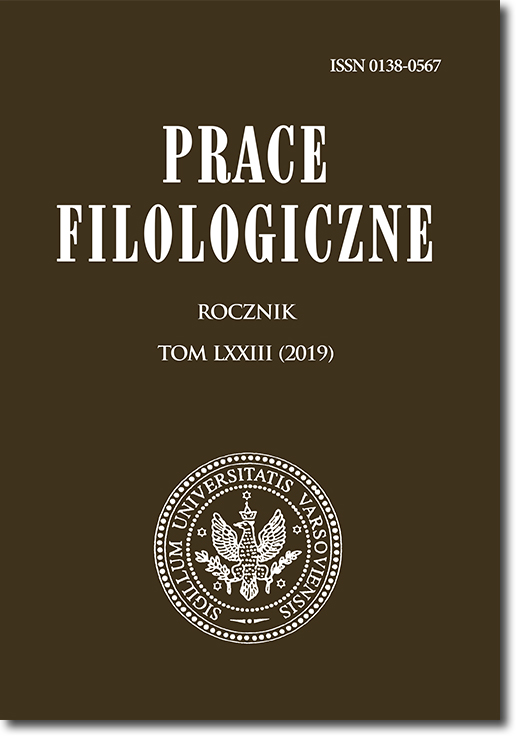„Člověka hledám”. Člověk v jazyce audioorálně-skripturálním a vizuálněmotorickém sémantické konfrontace
„Looking for a Man”: The Human Being in Audio-Oral-Textual and Visual-Motor Language – A Semantic Confrontation
Author(s): Irena Vaňková, Naďa Hynková DingováSubject(s): Theoretical Linguistics, Applied Linguistics
Published by: Wydział Polonistyki Uniwersytetu Warszawskiego
Keywords: human being; conceptualization; semantics; Czech; Czech Sign Language; Deaf; motivation; iconicity
Summary/Abstract: What is the content of the (Czech) concept ČLOVĚK (‘human being’)? Does the conceptualization of the human being differ in the perspective of a spoken/written language (such as Czech) and a sign language (such as Czech Sign Language), and if so, how? In modern Czech dictionaries, the meaning of the lexeme člověk (‘human being’) is usually defined based on features that distinguish a human being from animals (two legs, ability to work, speech etc.), whereas in older dictionaries, it is contrasted with supernatural beings, esp. God (referring to corporality, mortality, or imperfection). However, in language as well as in texts, we could find a series of other aspects influencing the meaning of the člověk lexeme; often in the form of an opposition (a human being v. inanimate object, e.g. a puppet or robot; a human being v. a number, an administrative item etc.). In Czech, a metonymical designation, based on using a part of a human body (such as face, head, leg or hand depending on the context) to refer to the whole person is also rather systematically used. The conceptualization of the human being in Czech Sign Language is to a great extent similar and at the same time different as it employs visual-motor means to convey the meaning, often with a great amount of iconicity. We focus mainly on signs and classifiers related to the concept ČLOVĚK (also with regard to their motivation) while also pointing out how the meaningful component člověk (‘human being’) is reflected in other, semantically close components. In greater detail, we will then compare the conceptualization of the human being in both languages, particularly with reference to the different mode of their realization.
Journal: Prace Filologiczne
- Issue Year: 2019
- Issue No: 73
- Page Range: 441-466
- Page Count: 26
- Language: Czech

